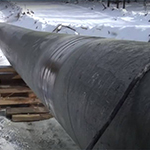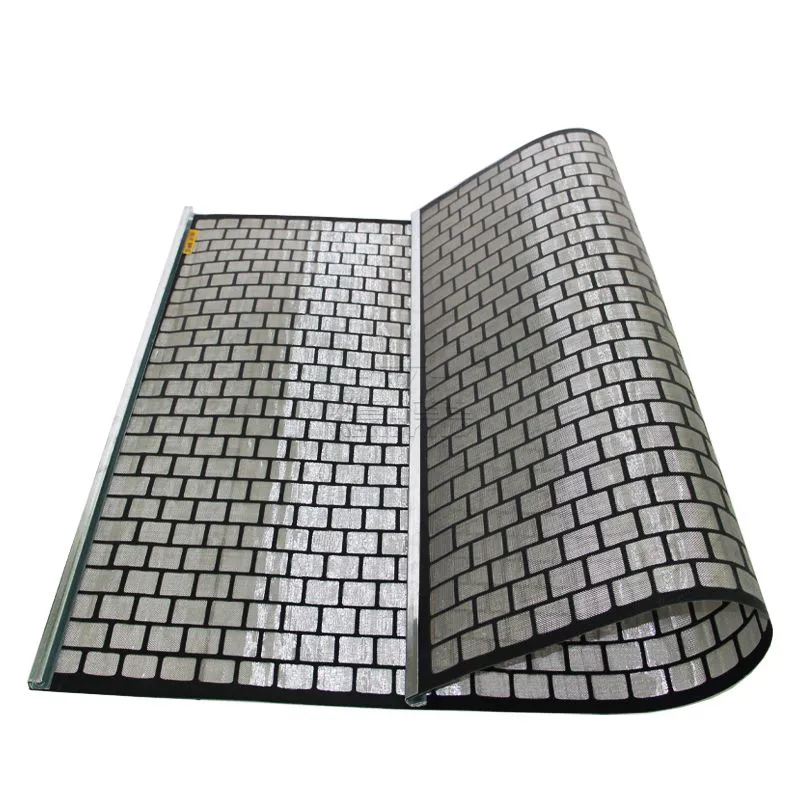- Industrial zone, South of Anping Town, Hengshui, Hebei, China.
- sales@hfpetromesh.com
- +86-18931809706
 Afrikaans
Afrikaans  Albanian
Albanian  Amharic
Amharic  Arabic
Arabic  Armenian
Armenian  Azerbaijani
Azerbaijani  Basque
Basque  Belarusian
Belarusian  Bengali
Bengali  Bosnian
Bosnian  Bulgarian
Bulgarian  Catalan
Catalan  Cebuano
Cebuano  Corsican
Corsican  Croatian
Croatian  Czech
Czech  Danish
Danish  Dutch
Dutch  English
English  Esperanto
Esperanto  Estonian
Estonian  Finnish
Finnish  French
French  Frisian
Frisian  Galician
Galician  Georgian
Georgian  German
German  Greek
Greek  Gujarati
Gujarati  Haitian Creole
Haitian Creole  hausa
hausa  hawaiian
hawaiian  Hebrew
Hebrew  Hindi
Hindi  Miao
Miao  Hungarian
Hungarian  Icelandic
Icelandic  igbo
igbo  Indonesian
Indonesian  irish
irish  Italian
Italian  Japanese
Japanese  Javanese
Javanese  Kannada
Kannada  kazakh
kazakh  Khmer
Khmer  Rwandese
Rwandese  Korean
Korean  Kurdish
Kurdish  Kyrgyz
Kyrgyz  Lao
Lao  Latin
Latin  Latvian
Latvian  Lithuanian
Lithuanian  Luxembourgish
Luxembourgish  Macedonian
Macedonian  Malgashi
Malgashi  Malay
Malay  Malayalam
Malayalam  Maltese
Maltese  Maori
Maori  Marathi
Marathi  Mongolian
Mongolian  Myanmar
Myanmar  Nepali
Nepali  Norwegian
Norwegian  Norwegian
Norwegian  Occitan
Occitan  Pashto
Pashto  Persian
Persian  Polish
Polish  Portuguese
Portuguese  Punjabi
Punjabi  Romanian
Romanian  Russian
Russian  Samoan
Samoan  Scottish Gaelic
Scottish Gaelic  Serbian
Serbian  Sesotho
Sesotho  Shona
Shona  Sindhi
Sindhi  Sinhala
Sinhala  Slovak
Slovak  Slovenian
Slovenian  Somali
Somali  Spanish
Spanish  Sundanese
Sundanese  Swahili
Swahili  Swedish
Swedish  Tagalog
Tagalog  Tajik
Tajik  Tamil
Tamil  Tatar
Tatar  Telugu
Telugu  Thai
Thai  Turkish
Turkish  Turkmen
Turkmen  Ukrainian
Ukrainian  Urdu
Urdu  Uighur
Uighur  Uzbek
Uzbek  Vietnamese
Vietnamese  Welsh
Welsh  Bantu
Bantu  Yiddish
Yiddish  Yoruba
Yoruba  Zulu
Zulu
- Afrikaans
- Albanian
- Amharic
- Arabic
- Armenian
- Azerbaijani
- Basque
- Belarusian
- Bengali
- Bosnian
- Bulgarian
- Catalan
- Cebuano
- Corsican
- Croatian
- Czech
- Danish
- Dutch
- English
- Esperanto
- Estonian
- Finnish
- French
- Frisian
- Galician
- Georgian
- German
- Greek
- Gujarati
- Haitian Creole
- hausa
- hawaiian
- Hebrew
- Hindi
- Miao
- Hungarian
- Icelandic
- igbo
- Indonesian
- irish
- Italian
- Japanese
- Javanese
- Kannada
- kazakh
- Khmer
- Rwandese
- Korean
- Kurdish
- Kyrgyz
- Lao
- Latin
- Latvian
- Lithuanian
- Luxembourgish
- Macedonian
- Malgashi
- Malay
- Malayalam
- Maltese
- Maori
- Marathi
- Mongolian
- Myanmar
- Nepali
- Norwegian
- Norwegian
- Occitan
- Pashto
- Persian
- Polish
- Portuguese
- Punjabi
- Romanian
- Russian
- Samoan
- Scottish Gaelic
- Serbian
- Sesotho
- Shona
- Sindhi
- Sinhala
- Slovak
- Slovenian
- Somali
- Spanish
- Sundanese
- Swahili
- Swedish
- Tagalog
- Tajik
- Tamil
- Tatar
- Telugu
- Thai
- Turkish
- Turkmen
- Ukrainian
- Urdu
- Uighur
- Uzbek
- Vietnamese
- Welsh
- Bantu
- Yiddish
- Yoruba
- Zulu
Bar Grating Metal Panels Durable & Cost-Effective Solutions
- Industry Overview & Market Data for Bar Grating Solutions
- Material Engineering: How Metal Choices Impact Performance
- Cost Analysis Across Different Bar Grating Configurations
- Manufacturer Comparison: Technical Specifications & Pricing
- Customization Options for Specialized Applications
- Case Studies: Successful Bar Grating Panel Implementations
- Future Trends in Bar Grating Technology

(bar grating)
Bar Grating Solutions in Modern Infrastructure
The global bar grating
market is projected to grow at 5.8% CAGR through 2030, driven by $2.3 billion in annual industrial flooring requirements. Steel bar gratings account for 68% of installations due to their 85 kN/m² average load capacity, while aluminum variants dominate corrosive environments with 92% chemical resistance efficiency.
Material Innovation in Load-Bearing Solutions
Three primary metals define bar grating performance:
- Carbon Steel: 55% of installations use ASTM A36 steel with 250 MPa yield strength
- Stainless Steel 304: Provides 18% chromium content for harsh environments
- Aluminum 6061-T6: 35% lighter than steel with 276 MPa tensile strength
Advanced galvanization techniques now achieve 75μm coating thickness, extending service life by 15 years versus untreated surfaces.
Economic Considerations for Project Planners
Price variances across bar grating types:
| Type | Price Range (sq ft) | Load Capacity | Maintenance Cycle |
|---|---|---|---|
| Welded Carbon Steel | $12.50 - $18.75 | Heavy (90 kN/m²) | 7 years |
| Stainless Steel Press-Locked | $27.80 - $35.40 | Medium (65 kN/m²) | 22 years |
| Aluminum Riveted | $20.15 - $28.90 | Light (40 kN/m²) | 18 years |
Technical Specifications Across Manufacturers
| Vendor | Yield Strength | Corrosion Resistance | Lead Time | MOQ |
|---|---|---|---|---|
| Vendor A | 345 MPa | ASTM B117-19 compliant | 3 weeks | 150 m² |
| Vendor B | 290 MPa | ISO 9227 certified | 5 weeks | 300 m² |
| Vendor C | 415 MPa | NACE TM0169 approved | 2 weeks | 75 m² |
Application-Specific Engineering
Custom bar grating panels address unique requirements:
- Slip Resistance: 3mm serrated surfaces achieve 0.85 COF on wet surfaces
- Thermal Expansion: Bi-metallic designs accommodate 12mm/meter thermal movement
- Hazardous Areas
Operational Efficiency Through Case Examples
Chemical Plant Retrofit: 304 stainless bar grating reduced fall incidents by 73% while withstanding pH 2.5 exposure. Sports Arena: Aluminum grating panels cut installation time by 40% through modular design.
Advancements in Bar Grating Manufacturing
Laser-cut bar grating now achieves ±0.25mm precision, while robotic welding systems deliver 12-meter continuous spans. New composite materials combine steel strength (550 MPa) with polymer corrosion resistance (0.003mm/year loss rate).

(bar grating)
FAQS on bar grating
Q: What factors influence bar grating cost?
A: Bar grating cost depends on material type (steel, aluminum), thickness, spacing, and finish. Custom designs or coatings like galvanization may increase pricing. Volume orders often reduce per-unit costs.
Q: Which metals are commonly used for bar grating?
A: Popular bar grating metals include carbon steel, stainless steel, and aluminum. Carbon steel is cost-effective for industrial use, while stainless steel offers corrosion resistance. Aluminum is lightweight and ideal for marine environments.
Q: How are bar grating panels installed?
A: Bar grating panels are secured using clips, bolts, or welding to support structures. Proper alignment and spacing ensure load-bearing capacity and safety. Installation methods vary based on application and panel size.
Q: What maintenance do metal bar gratings require?
A: Regular cleaning and inspection prevent debris buildup and corrosion. Galvanized or coated bar gratings need minimal upkeep. Severe damage may require panel replacement for structural integrity.
Q: Where are bar grating panels typically applied?
A: Bar grating panels are used in industrial platforms, drainage systems, and walkways. They provide slip resistance and ventilation in factories, bridges, and public infrastructure. Custom sizes suit architectural and safety needs.
-
Why Our Shaker Screen for Sale Stands Out in Every ApplicationNewsAug.08,2025
-
Unmatched Efficiency with Premium Shale Shaker Screen TechnologyNewsAug.08,2025
-
Reliable, Durable, and Cost-Effective: Press Locked Steel Grating SolutionsNewsAug.08,2025
-
Precision Strength with Welded Steel Bar GratingNewsAug.08,2025
-
Perimeter Safety Netting: The High-Strength Shield for Elevated Safety SolutionsNewsAug.08,2025
-
Maximize Performance with Steel Walkway GratingNewsAug.08,2025